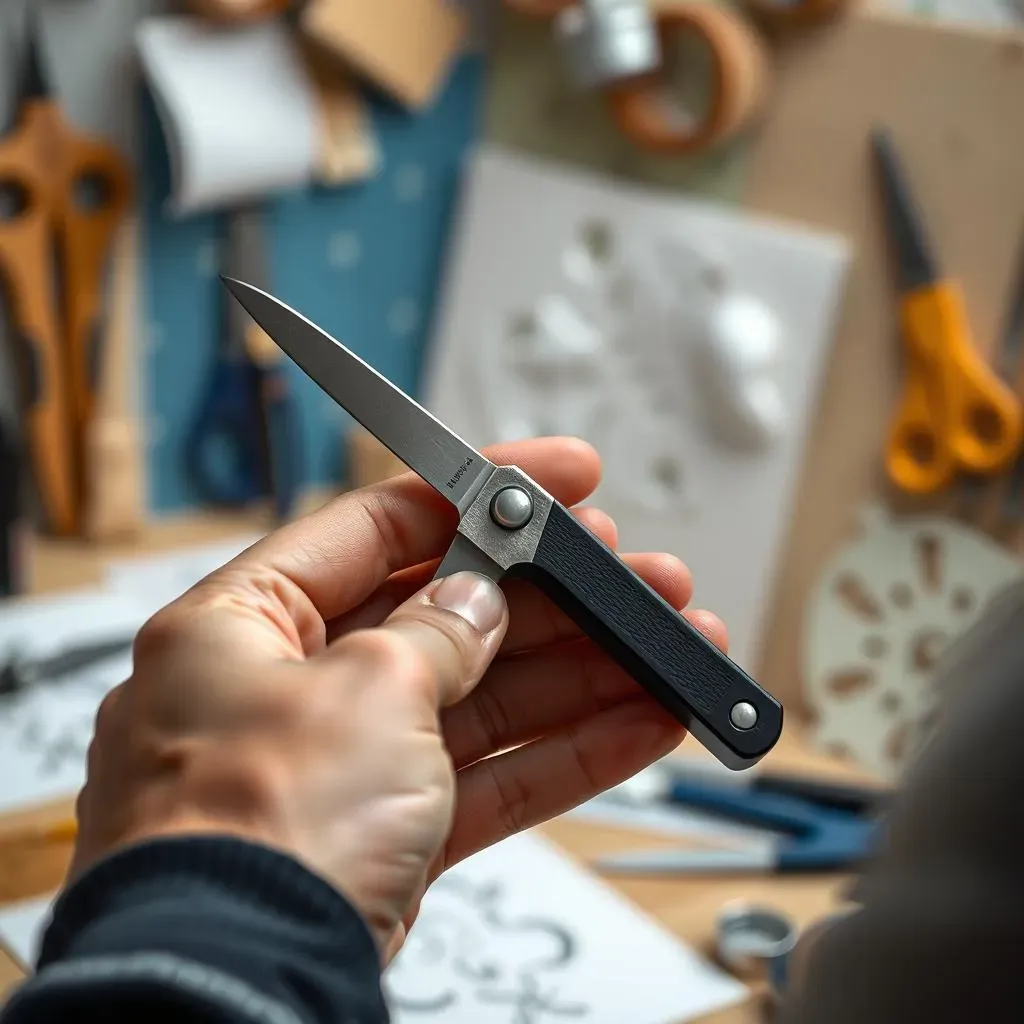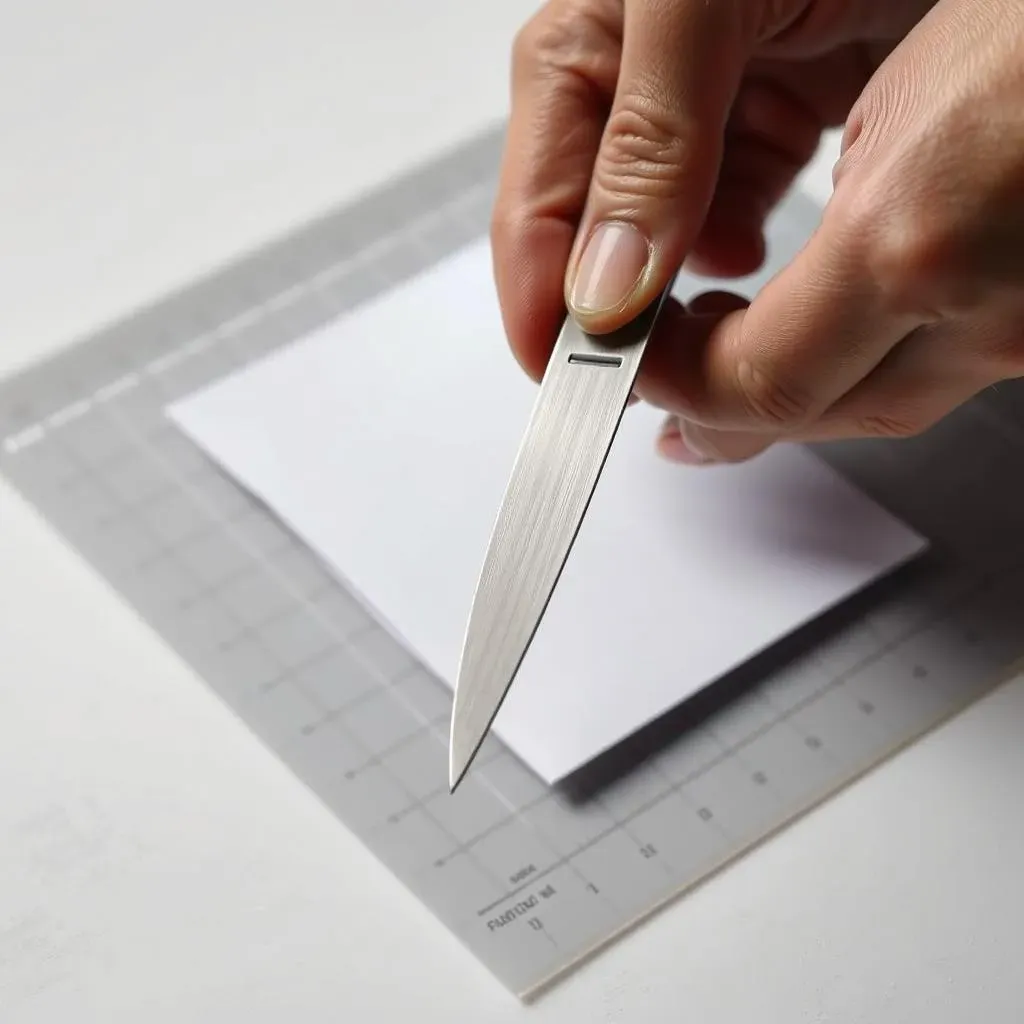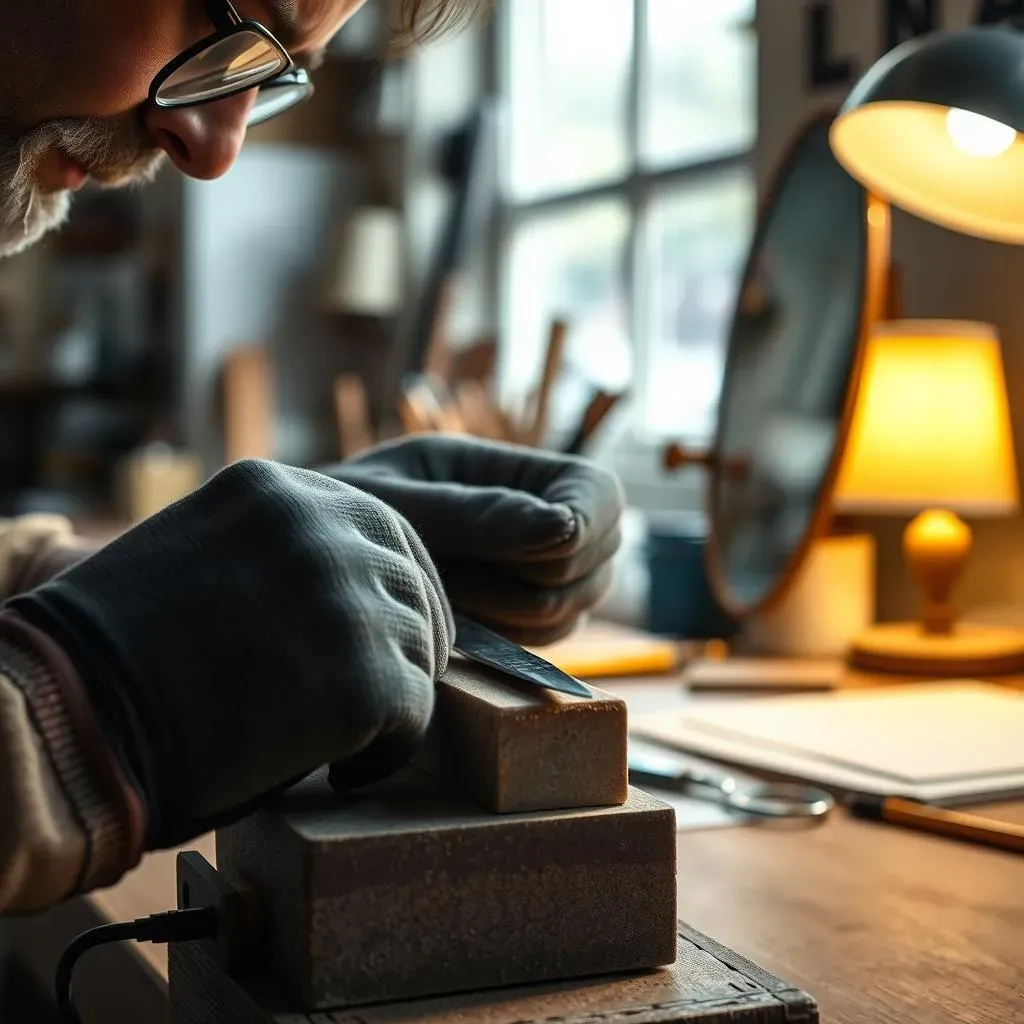Table of Contents
Ever tried wrestling with a dull blade and a stack of paper? It's not pretty, is it? The struggle is real, and that's where the right paper cutting knives come in. Forget jagged edges and frustration; we're talking about clean, precise cuts that make your projects pop. This isn't just about having a sharp tool; it's about unlocking a world of creative possibilities. Whether you're a seasoned crafter or just starting out, the right knife can be a game-changer. We'll explore the types of paper cutting knives available and how to choose the perfect one for you. We'll also cover the essential techniques to use these tools like a pro, and don't worry we won't leave you hanging. We will also show you how to keep your blades in top condition, ensuring they're always ready for your next masterpiece. Let's get started and make sure you're not just cutting paper, but crafting with confidence. Ready to get sharp?
Choosing the Right Paper Cutting Knives
Choosing the Right Paper Cutting Knives
The Blade Matters
Okay, so you're ready to get serious about paper cutting. First things first, let's talk blades. Not all blades are created equal, you know? You've got your standard blades, which are fine for basic stuff, but if you're after precision, you need to look for something better. Think about the angle of the blade; a 30° angle is your friend for intricate work, because it gives you much more control. The material matters too; SK-120 steel is a good choice as it is super sharp and holds its edge for longer. It is like having a tiny, dependable samurai sword for paper.
And don't forget about blade thickness. A thicker blade might feel more robust, but a thinner one will give you finer cuts, which is what you want when you're dealing with detailed designs. It's a bit like choosing between a thick marker and a fine-tipped pen; both have their uses, but for delicate work, you know which one wins.
Blade Feature | Impact on Cutting |
|---|---|
Blade Angle (30°) | More precise, better for intricate designs |
Blade Material (SK-120 steel) | Sharp and durable, maintains edge longer |
Blade Thickness (thin) | Finer cuts, ideal for detailed work |
Handle With Care
Now, let's get a grip—literally. The handle of your paper cutting knife is just as important as the blade. A comfortable grip means you can work for longer without your hand cramping up. Look for handles with some kind of ergonomic design; a comfort grip can make a world of difference. It's the difference between a nice walk and a painful hike. And a 1mm-strong blade sleeve? That's not just for show, it gives you a good grip to work with, and it prevents the blade from bending or breaking during use which is a big plus.
Also, think about the type of knife you need. Some are like pens, and others are like small scalpels. Some have replaceable blades, and others are fixed. If you're doing a lot of cutting, replaceable blades are the way to go; they keep you sharp and save you from having to get a brand new knife every time the blade dulls. It's about finding what feels right in your hand and what suits your style of cutting.
"The right tool in the right hands can accomplish anything." - Unknown
Essential Techniques for Using Paper Cutting Knives
Essential Techniques for Using Paper Cutting Knives
The Gentle Touch
Alright, you've got your fancy new paper cutting knife, but hold your horses; it's not a race to see how fast you can slice. The secret is not in brute force, but in finesse. You don't need to press down hard, think of it more like gliding through the paper, letting the sharpness of the blade do the work. It's like when you're painting; you don't mash the brush into the canvas, you let the bristles gently apply the paint. The same goes for paper cutting; a light, controlled touch will get you the cleanest cut and you'll be less likely to slip up.
And, always remember to use multiple passes instead of trying to cut through in one go, especially when cutting thicker paper. It's like when you are trying to cut a big tree with an axe, you don't just try to cut it with one swing, you do multiple swings and you gradually cut through the trunk. It is the same with cutting paper you do multiple passes and you gradually cut through the paper. This technique is a game-changer for intricate designs.
Technique | Benefit |
|---|---|
Light Pressure | Clean cuts, reduces slips |
Multiple Passes | Better for thick paper, intricate work |
Controlled Movement | More accurate, less errors |
Cutting With the Grain
Here's a little secret that can make a big difference: paper has a grain. Yes, just like wood. Cutting with the grain is easier and results in cleaner cuts, while cutting against the grain can cause the paper to tear and snag. You might not notice it at first, but once you start paying attention, you'll see the difference. It's like trying to swim with or against the current; one way is a lot smoother than the other.
Also, be sure to rotate the paper, not the knife. This is like when you are driving a car, you turn the wheel, not the car. Rotate the paper as you cut, this allows you to keep the blade in a natural and comfortable position. This will give you more control over the cut. And always use a cutting mat. It is your friend, it not only protects your table but it also provides a stable surface for you to cut on.
"The details are not the details. They make the design." - Charles Eames
Maintaining Your Paper Cutting Knives
Maintaining Your Paper Cutting Knives
Keeping it Sharp
Okay, so you've been cutting up a storm, now it's time to talk maintenance, because even the sharpest blades need a little TLC. First up, let's talk about keeping that edge. A dull blade is not just frustrating, it's also dangerous, because you tend to press harder, which increases the risk of slipping and making a mistake. So, how do you keep them sharp? Well, if you've got replaceable blades, that's easy, simply swap them out for new ones. But for fixed blades, you'll need to hone them. Use a honing steel or a fine sharpening stone to get that edge back. It's like giving your blade a little spa day.
And don't forget to clean your blades regularly. Paper dust and residue can build up on the blade, making it less efficient. Use a soft cloth or a brush to gently wipe the blade after each use. A little bit of care goes a long way in keeping your blades cutting smoothly. It is like washing your car; you don't just leave the dirt on the car, you wash it to keep it clean. The same goes for your blades, you clean them to keep them sharp.
Maintenance Task | Why it's Important |
|---|---|
Replacing Blades | Ensures consistent sharpness, prevents dull cuts |
Honing/Sharpening | Restores blade edge, improves cutting efficiency |
Cleaning | Removes residue, maintains blade performance |
Storage and Safety
Now, let's talk about storing your paper cutting knives safely. You wouldn't leave your sharp knives lying around in the kitchen, would you? The same goes for your paper cutting knives. Keep them in a safe place, away from little hands and clumsy feet. Some knives come with their own cases or sheaths; use them. If not, a simple drawer or a tool box will do the trick. It's about being responsible and preventing accidents.
And always, always, be mindful when handling your paper cutting knives. These are sharp tools, not toys. Don't rush, don't cut in a hurry, and always keep your focus on what you are cutting. It's like driving a car; you need to be alert and mindful of what you are doing. A moment's carelessness can lead to a nasty cut. So, take your time, be careful, and enjoy the process of crafting with paper. It's a journey of precision, not a race.
"A well-maintained tool is a happy tool." - Anonymous
